| Home |
| LSMS2007 Scenes & Photos |
| What's New |
| Organization |
| Author's Kit |
| Guidelines for PC Members |
| Guideline for Reviewers |
| Plenary and Keynote |
| Conference Venue |
| Transportation |
| Contact Persons |
Plenary speakers
Prof. George W Irwin, FREng, MRIA, FIEEE Queen's University Belfast , UK
http://www.qub.ac.uk/research-centres/ISAC/
Prof.
Juergen Kurths,
http://www.agnld.uni-potsdam.de/~juergen/
Prof.
Tong Heng Lee, The National
http://www.eng.nus.edu.sg/deanleeth/
Dr. Frank L. Lewis, The
http://www.uta.edu/ra/real/editprofile.php?loginid=1000061922
Dr.
Da Ruan, Belgian Nuclear
Research Centre (SCK·CEN),
https://www.sckcen.be/sckcen_en/activities/research/flinhome/druan.shtml
Prof.
Mitsuo Umezu,
http://www.umezu.mech.waseda.ac.jp/
Prof.
Svetha Venkatesh,
http://www.computing.edu.au/~svetha/
Dr.
Stephen Wong,
http://neuroinformatics.harvard.edu/staff/stephen.htm
Prof
John Casti, IIASA and The
keynote speech
===================================
Computational Intelligence for Data Modelling with Life Science Applications
Prof George W Irwin and Dr Kang Li
Intelligent Systems and Control
Queen's University
Abstract: In control and systems
data modelling refers to finding underlying
regularities or relationships from measured data. It is used for pattern
recognition and dynamic modelling and is a key
supporting technology across a wide range of domains, including the life
science. While machine learning, function approximation and statistical modelling, are all used for data modelling,
we will confine our attention to computational intelligence, with a focus on
neural networks.
To begin our experiences of
nonlinear modelling and control since the early 1980s
will be briefly introduced. This will cover local and global networks, advanced
trainin algorithms, multiple-controller networks,
construction techniques, model-based control, learning systems and
applications.
Engineering-genes (Eng-genes) a
recent computational intelligence technique for dynamical modelling
will then be described. Here the underlying physical knowledge is encoded in
the neural activation functions or eng-genes. Selection of the dominant
eng-genes and combined structural identification and parameter estimation is
achieved within a genetic algorithm framework. A new two-stage stepwise identification
method will be described for linear-in-the-parameters model built from a (very
large) pool of basis functions. This avoids the inherent matrix decomposition
in Orthogonal Least Squares, thereby reducing computational complexity and
improving model performance. The results of simulation studies of several types
of biochemical oscillations, in the form of modelling
with a polynomial NARX structrure will be used for
illustration.
An acute myocardial inforction (or heart attack) (AMI) is caused by a coronary
artery becoming completely obstructed and blood supply being lost to an area of
the cardiac tissue. Once the heart cells lose their blood supply, certain
chemicals are able to pass through the cell membrane and enter the blood
stream. These so-called cardiac markers, have been
found to be useful in diagnosing AMI, especially where electrocardiograph (ECG)
readings are inconclusive. The final part of the talk will describe results
from training Logistic regression and Gaussian mixture model (GMM) classifers to estimate the probability of AMI in patients
based opon the concentrations of a panel of cardiac
markers.
----------------------------------
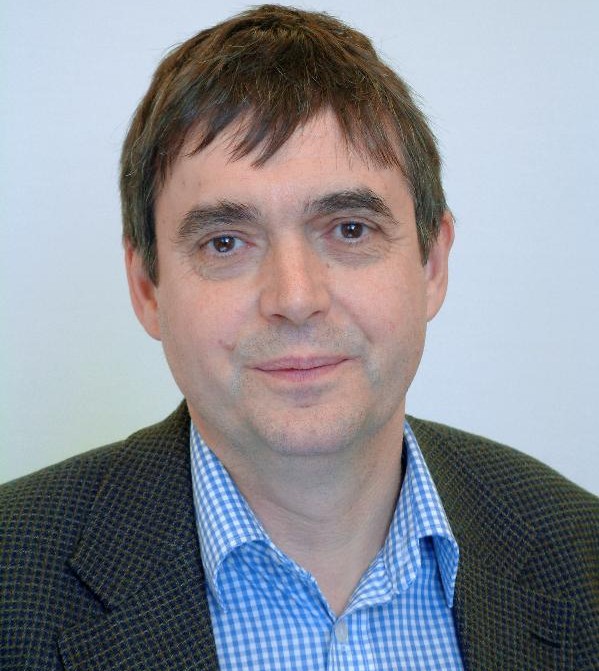
Prof George W Irwin
Intelligent Systems and Control
Queen's University
Professor George Irwin leads the
Intelligent Systems and Control Research group and is Director of the
University Virtual Engineering Centre at Queen University Belfast. He has been
elected Fellow of the Royal Academy of Engineering and Member of the
===================================
Structural and functional cluster of complex brain
networks
J. Kurths, L. Zemanova, and C. Zhou
Abstract: Recent
research has revealed a rich and complicated network topology in the cortical
connectivity of mammalian brains. A challenging task is to understand the
implications of such network structures on the functional organization of the
brain activities. This is studied here basing on dynamical complex networks. We
investigate synchronization dynamics on the cortico-cortical
network of the cat by modelling each node (cortical
area) of the network with a sub-network of interacting excitable neurons. We
find that the network displays clustered synchronization behaviour
and the dynamical clusters coincide with the topological community structures
observed in the anatomical network. Our results provide insights into the
relationship between the global organization and the functional specialization
of the brain cortex.
----------------------------------
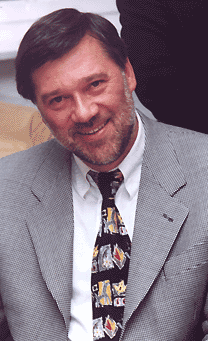
Prof. Juergen Kurths
===================================
Development of a Computer-Controlled System for Intracytoplasmic
Sperm Injection with Electro-Activation
Prof. Tong Heng Lee
The National
Abstract: In this talk, the
development of a computer-controlled system for Intracytoplasmic
Sperm Injection (ICSI) with electro-activation is presented. The overall system
comprises of a precisely controlled piezo
micromanipulation stage integrated to a microinjection workstation, and an
electro-activation system capable of automatic medium refresh. The system is
comprehensive, comprising of modularly functional components, integrated within
a hardware architecture. Experimental and clinical
results are provided to verify the effectiveness of the developed system.
----------------------------------
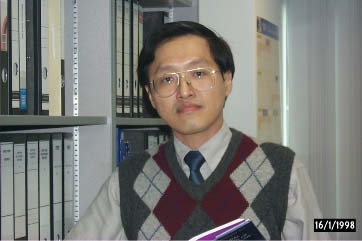
Prof. Tong Heng Lee
The National
T. H. Lee received the B.A. degree
with First Class Honours in the Engineering Tripos from
Dr. Lee’s research interests are in
the areas of adaptive systems, knowledge-based control, intelligent mechatronics and computational intelligence. He currently
holds Associate Editor appointments in the IEEE Transactions in Systems, Man
and Cybernetics; Control Engineering Practice (an IFAC journal); the
International Journal of Systems Science (Taylor and Francis, London); and Mechatronics journal (Oxford, Pergamon
Press).
Dr. Lee was a recipient of the
Cambridge University Charles Baker Prize in Engineering. He has also
co-authored three research monographs, and holds four patents (two of which are
in the technology area of adaptive systems, and the other two are in the area
of intelligent mechatronics).
===================================
Neural Network Structures for
Adaptation in Engineering Feedback Control Systems
F. L. Lewis
Fellow IEEE, Fellow U.K. Institute
of Measurement and Control
Head, Advanced Controls and Sensors
Group
Automation and Robotics Research
Institute
The
http://arri.uta.edu/acs
Abstract:
Engineering feedback control systems are responsible for obtaining desired
performance from industrial, automotive, robotic, aerospace, and other man-made
systems. Included are aircraft autopilots, engine fuel/air mixture and
combustion control, ship steering and navigation systems, automated robotic
manufacturing cells, spacecraft trajectory control, etc. Control System
Theory is a body of theory that deals with the design of feedback controllers; it is heavily rooted in mathematical proofs of
stability and performance and provides algorithms for the design of feedback
controllers that guarantee such desirable properties. Performance
guarantees are the key to acceptance of control structures by the Control
Systems Community as well as by private industry.
Control
system theory has been based on certain well understood and accepted techniques
including adaptive control, robust control, nonlinear systems theory, transfer function methods, state-space methods, etc.
During the past several years, it has become more and more clear that methods
from the modeling and analysis of life science systems hold out the hope of
significantly improving the performance of man-made control systems, and should
be added to the control engineer's toolbox of techniques. For instance,
in the arena of adaptive control, there has been great interest in artificial
neural networks that include dendrite-like weightings, action potential
thresholds, and nonlinear processing elements akin to those in the body and
axon of the neuron. It has been shown that these ANN, modeled as
mathematical processing networks, can extend the capabilities of adaptive
controllers by making them applicable for more complex nonlinear systems, and
also by greatly improving the system performance.
In
this talk we will explore some feedback control structures that are based on
biologically inspired systems, showing how they impact the performance and
design algorithms of the feedback engineer. Learning and adaptation
structures will be developed that improve the performance of controllers and
allow their application to complex engineered systems with modeling
inaccuracies, vibrational effects, disturbances, and
strict performance requirements.
----------------------------------
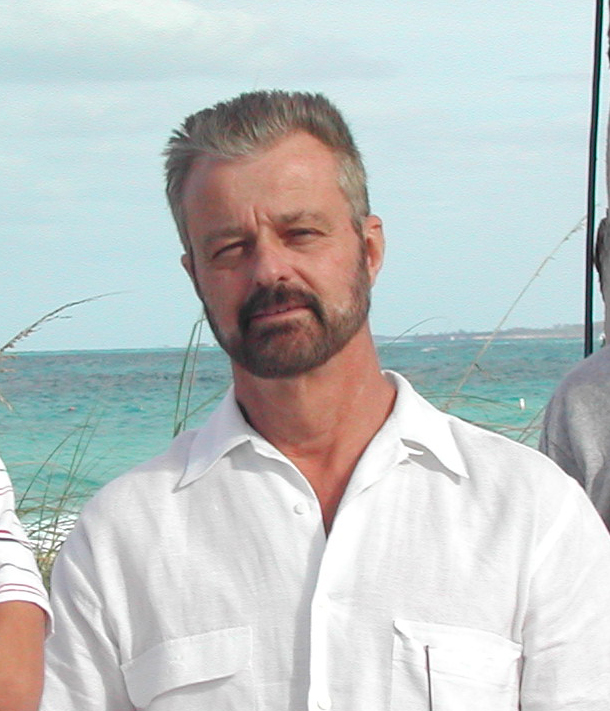
F. L. Lewis,
Ph.D., Fellow IEEE, Fellow U.K. Inst. MC,
Professional Engineer
Moncrief-O'Donnell Endowed Chair
University Distinguished Scholar
Professor
Senior Fellow, Automation &
Robotics Research Institute
Head, Advanced Controls &
Sensors Group
Automation & Robotics Research
Institute
The
Dr.
Lewis was born in
Current interests include intelligent control, neural and fuzzy systems,
wireless sensor networks, nonlinear systems, robotics, condition-based maintenance,
micro-electro-mechanical systems (MEMS) control, and manufacturing process
control. Author of 5 U.S. patents, 174 journal papers, 32 chapters and
encyclopedia articles, 286 refereed conference papers, and 11 books including
Optimal Control, Optimal Estimation, Applied Optimal Control and Estimation,
Aircraft Control and Simulation, Control of Robot Manipulators, Neural Network
Control, High-Level Feedback Control with Neural Networks and the IEEE reprint
volume Robot Control. Served/serves on many Editorial
Boards including International Journal of Control, Neural Computing and
Applications, Optimal Control & Methods, and Int. J. Intelligent Control
Systems. Served as Editor for the flagship
journal Automatica. Recipient
of NSF Research Initiation Grant and continuously funded by NSF since 1982.
Since 1991 he has received $6 million in funding from NSF, ARO and other
government agencies, including significant DoD SBIR and industry funding. His SBIR program
was instrumental in ARRI’s receipt of the US SBA Tibbets Award in 1996. Received Fulbright Research
Award, American Society of Engineering Education F.E. Terman
Award, three Sigma Xi Research Awards, UTA Halliburton Engineering Research
Award, UTA Distinguished Research Award, ARRI Patent Awards, various Best Paper
Awards, IEEE Control Systems Society Best Chapter Award (as Founding Chairman
of DFW Chapter), and National Sigma Xi Award for Outstanding Chapter (as
President of UTA Chapter). Received Outstanding Service Award from the
Dallas IEEE Section and selected as Engineer of the year by Ft. Worth IEEE Section. Listed in
===================================
----------------------------------
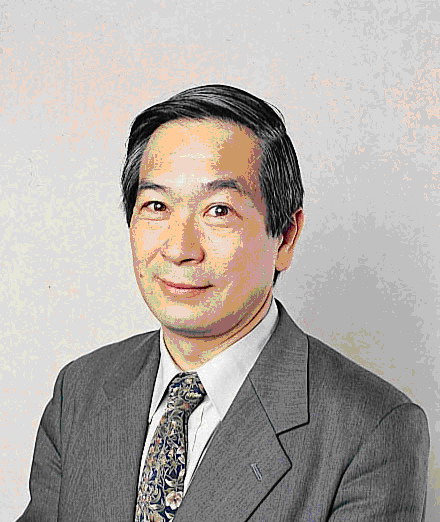
Mitsuo UMEZU, PhD
Professor, Chairman of Integrative
Bioscience and Biomedical Engineering,
I
have 30 years experience on the development of artificial hearts, and it is
lucky enough for me that two types of artificial hearts, both of which I
involved in, have been applied clinically in
===================================
Spatial Activity Recognition: A
biological inspired model
Professor Svetha
Venkatesh
Curtin
Abstract:
In the pattern recognition community, computer scientists face many open and
difficult problems in learning, tracking and classification, and many of these
issues arise because of noisy data, imperfect training samples and problem
complexity. In this talk, we examine how to solve these open problems with
biological principles. Spatial activity recognition in everyday
environments is particularly challenging due to these issues. This
problem is important in many domains, such as smart homes, large scale urban
surveillance and so on. We address the noise issue of spatial recognition with
a biologically-inspired chemotactic model that is
capable of handling noisy data. The model is based on bacterial chemotaxis, a process that allows bacteria to survive by
changing motile behaviour in relation to
environmental dynamics. Using chemotactic principles,
we propose the chemotactic model and evaluate its
classification performance in a smart house environment. We show that the
model exhibits high classification accuracy with a diverse dataset and
outperforms current models. Importantly, unlike other bottom-up spatial
activity recognition models, we show that the chemotactic
model is capable of recognising simple interwoven
activities, unlike any other computational approach.
----------------------------------
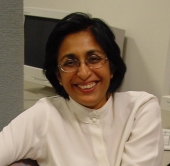
Professor Svetha
Venkatesh
Curtin
Venkatesh is the Director of the Institute for Multi-Sensor
processing and Content Analysis at Curtin University of Technology,
===================================
High throughput imaging for systems
neurobiology
Dr. Stephen Wong
Abstract:
Optical microscopy and imaging now are indispensable tools in biomedical
research. The advances in automation and molecular probes have reached a
stage where we can generate many times more high quality, high content data
than we are able to analyze. The biologists and clinical researchers
currently "eyeball" most images, thus extracting only a fraction of
the imbedded data and drawing only general and descriptive conclusions.
This talk will present some of the computerized imaging solutions developed in
our lab to study neurological disorders and the efficacy of the therapeutics at
various levels of biology.
----------------------------------
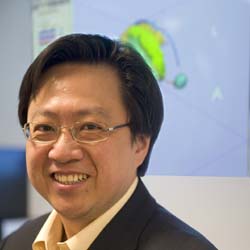
Dr. Stephen Wong
Stephen
TC Wong, Ph.D., PE is the Executive Director of Functional and Molecular
Imaging Center, Brigham & Women's Hospital, the Director of HCNR Center for
Bioinformatics and an Associate Professor of Radiology, Harvard Medical School.
He has over two decades of R&D experience in academia and industry
worldwide, including HP, AT&T Bell Labs, Japanese Fifth Generation
Computing Project, Royal Philips Electronics, UCSF, and Harvard. His
group investigates imaging and bioinformatics techniques for biomarker
development, scientific discovery, and personalized medicine. Stephen has
published over 200 peer-reviewed papers and 6 patents.
===================================
Biologizing Control Theory
Dr. John L. Casti
IIASA and The
----------------------------------
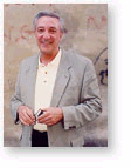
Dr. John L. Casti
IIASA and The
I
received my Ph.D. in mathematics under Richard Bellman at the
In
2000 I formed two companies in
Over
the past few years, I have written a numerous articles and seven technical monographs
and textbooks on mathematical modeling. In addition, I am the editor of the
journals Applied Mathematics & Computation (
In
addition to these technical volumes, I have written several popular books on
science: Paradigms Lost: Images of Man in the Mirror of Science (Morrow, 1989),
which addresses several of the most puzzling controversies in modern science,
Searching for Certainty: What Scientists Can Know About the Future (Morrow,
1991), a volume dealing with problems of scientific prediction and explanation
of everyday events like the weather, stock market price movements and the
outbreak of warfare, and Complexification
(HarperCollins, 1994), a study of complex systems and the manner in which they
give rise to counterintuitive, surprising behavior. I have also written two
popular volumes on mathematics: Five Golden Rules: Great Theories of
20th-Century Mathematics---and Why They Matter, and its sequel, Five More
Golden Rules (1995, 2000) both published by John Wiley & Sons (New York).
My next work of popular science was Would-Be Worlds, a volume on computer
simulation and the way it promises to change the way we do science. It was also
published by John Wiley & Sons (
More
recently, my published books include Art & Complexity (Elsevier, Amsterdam,
2003), a volume edited with A. Karlqvist, as well as
a short volume on the life of the Austrian logician, Kurt Gödel, the book
Gödel: A Life of Logic (Perseus Books, Cambridge, MA,
2002). In the same year I published the volume, The One, True, Platonic Heaven
(Joseph Henry Press, Washington, DC, 2003), which addresses in a fictional
format the question of the limits to scientific knowledge.
My
current research interests have also shifted somewhat to the exploration of
questions in the social and behavioral realm and the relationship between
social "moods" and their consequent social actions and behaviors. In
this direction, my latest book, Zeitgeist: Why We See the Events We Do|and Not See Something Else, addresses the directions and
patterns of social causation and their implications for future trends and
collective social events, such as styles in popular culture, the outcome of
political processes, and even the rise and fall of civilizations.